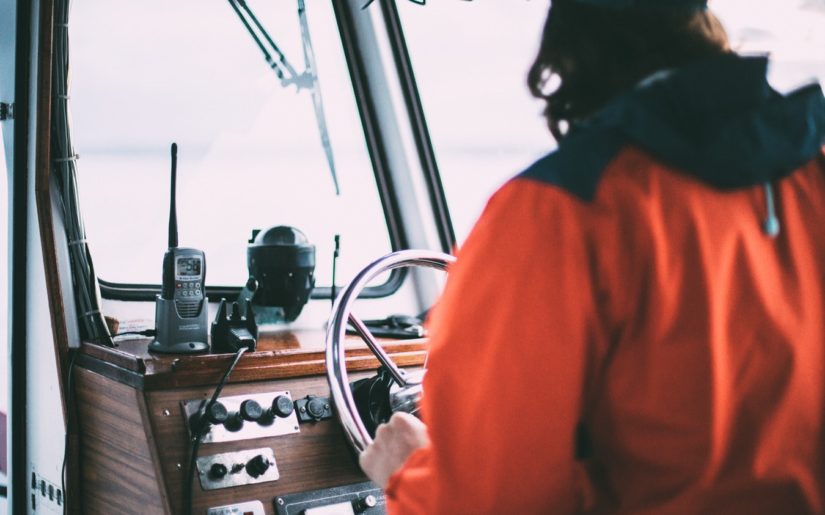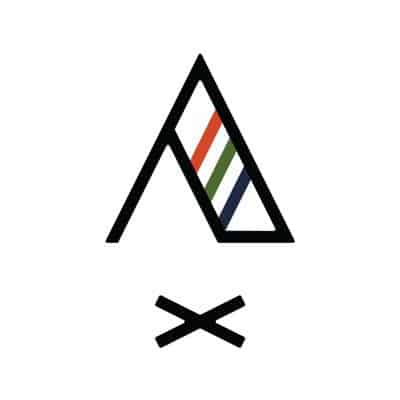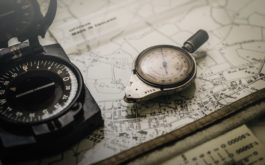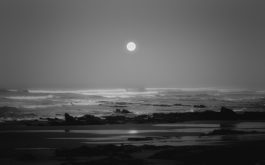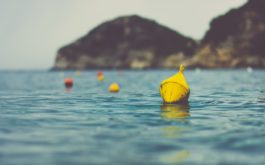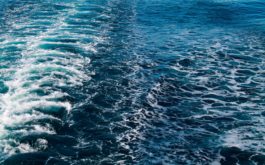The Lateral Navigation System is used to mark the most preferred and safest routes. Consisting of red and green buoys, this system marks the course of deepest water and indicates on which side of the buoy you should safely pass.
In the Lateral System, buoys and beacons indicate the sides of the channel or route relative to a conventional direction of buoyage (usually upstream). They also mark junctions (a point where two channels meet) or bifurcations (the point where a channel divides). They can also mark a place where two tributaries meet.
Keep in mind: When navigating along the course of a channel or fairway you should be as near to the outer limit of the channel or fairway on the starboard side as is safely possible.
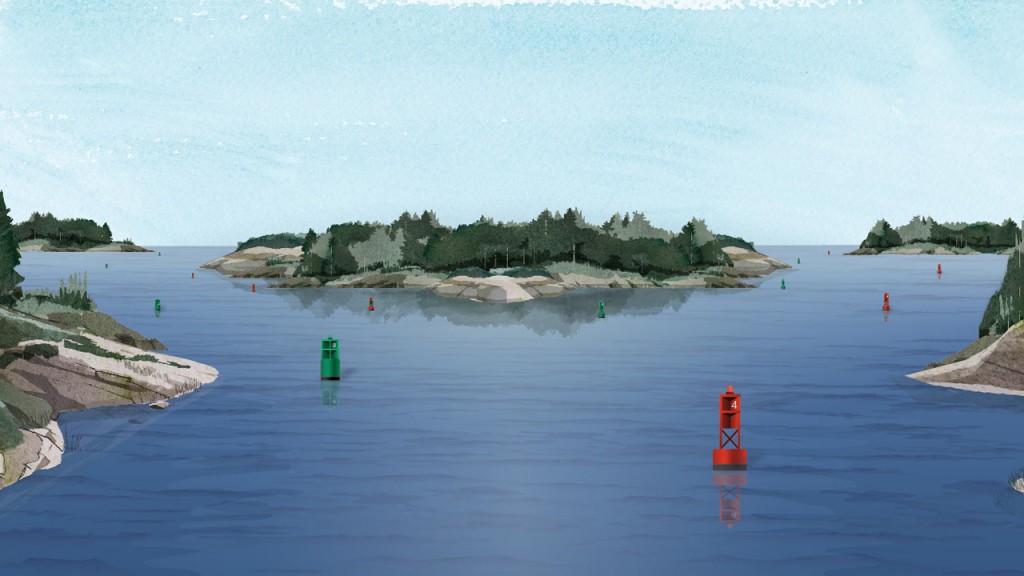
There are two main types of Lateral System buoys which are most familiar to boaters and are standard for international waterways:
- Green Port-hand Buoys
- Red Starboard-hand Buoys
In total, there are six types of lateral buoys including:
- Port-Hand Buoys
- Starboard-Hand Buoys
- Port Bifurcation Buoys
- Starboard Bifurcation Buoys
- Fairway Buoys
- Isolated Danger Buoys
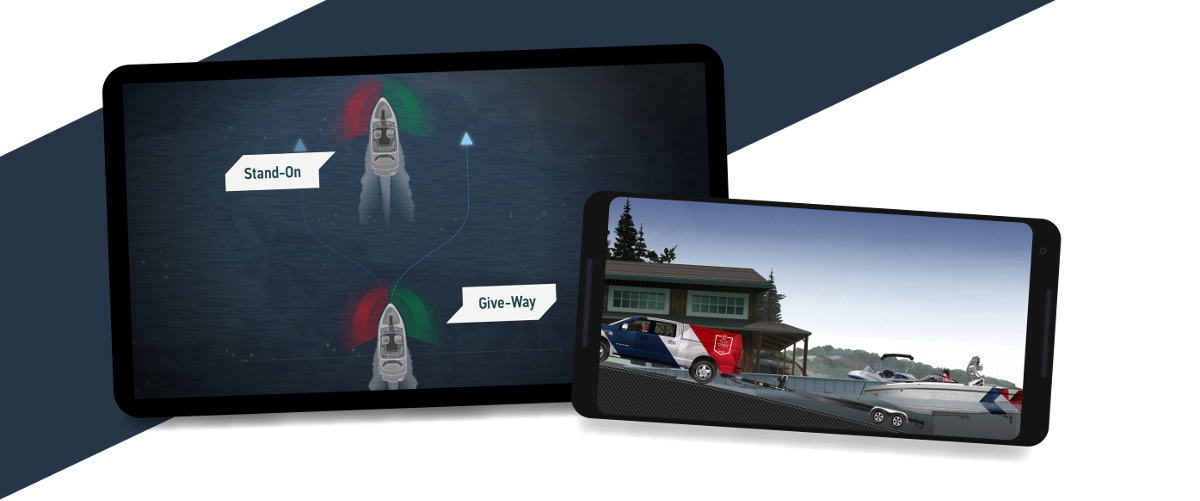
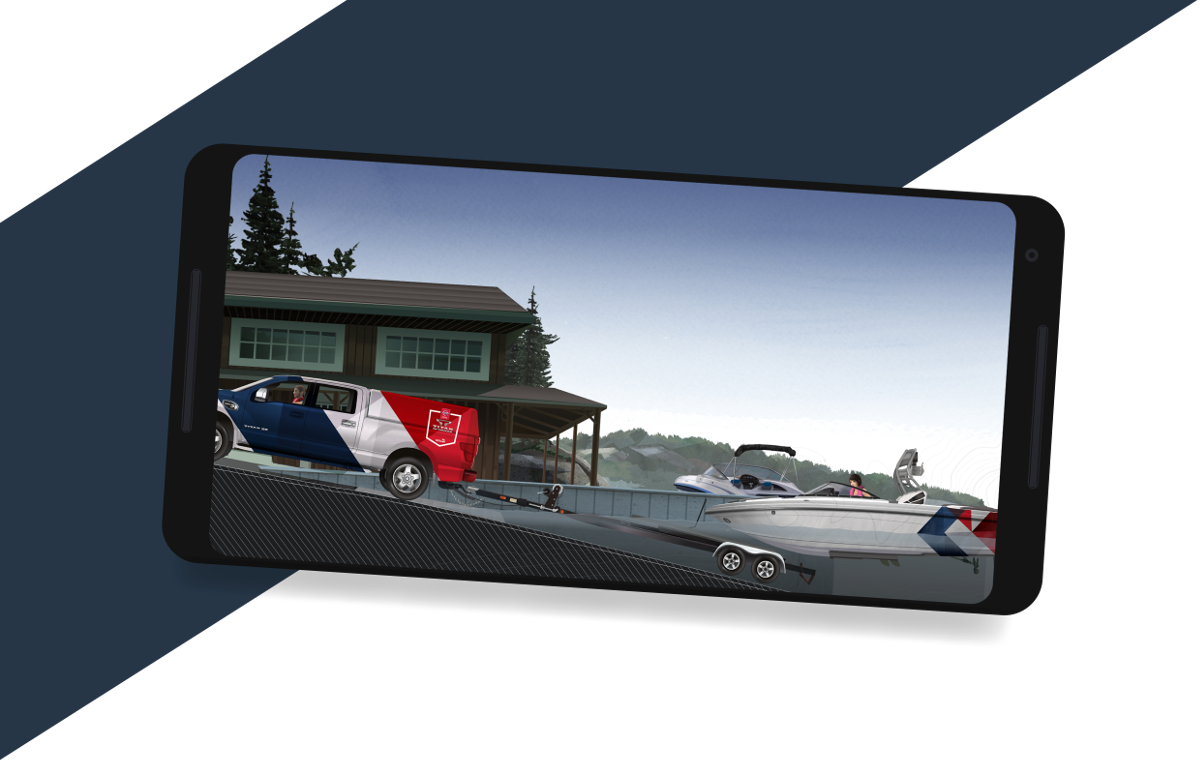
Get your Official North American
Boating License
The Official NASBLA and Transport Canada Boating Course, Test & License.
Get your Official North American
Boating License
The Official NASBLA and Transport Canada Boating
Course, Test & License.
Port-hand bouys
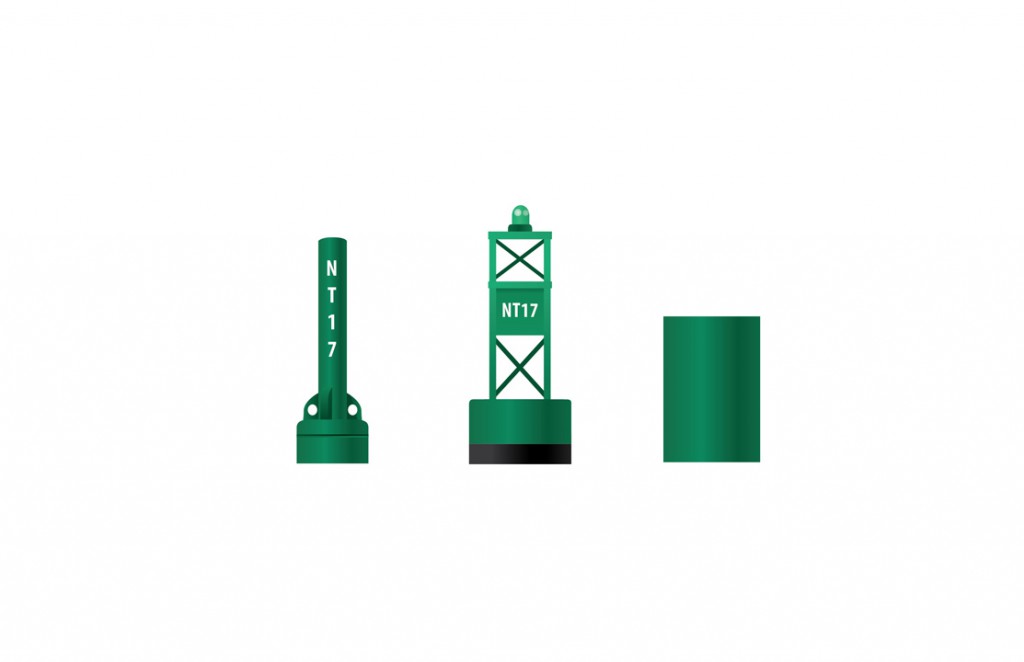
Port-Hand Buoys are green in colour and mark the left side of a channel or the location of a specific danger. These buoys must be kept on the left-hand side of your boat when heading upstream.
Port-Hand Buoys are identified by letter(s) and odd-digit number(s), and in standard configuration, are flat on the top. In some instances, a Port-Hand Buoy may be fitted with a top-mark consisting of a single green cylinder.
Port-Hand Buoys may also be fitted with a green light that flashes in either a:
- F1 pattern (single flashes in four second intervals); or
- Q pattern (quick, single flashes one second apart)
Starboard-hand bouys
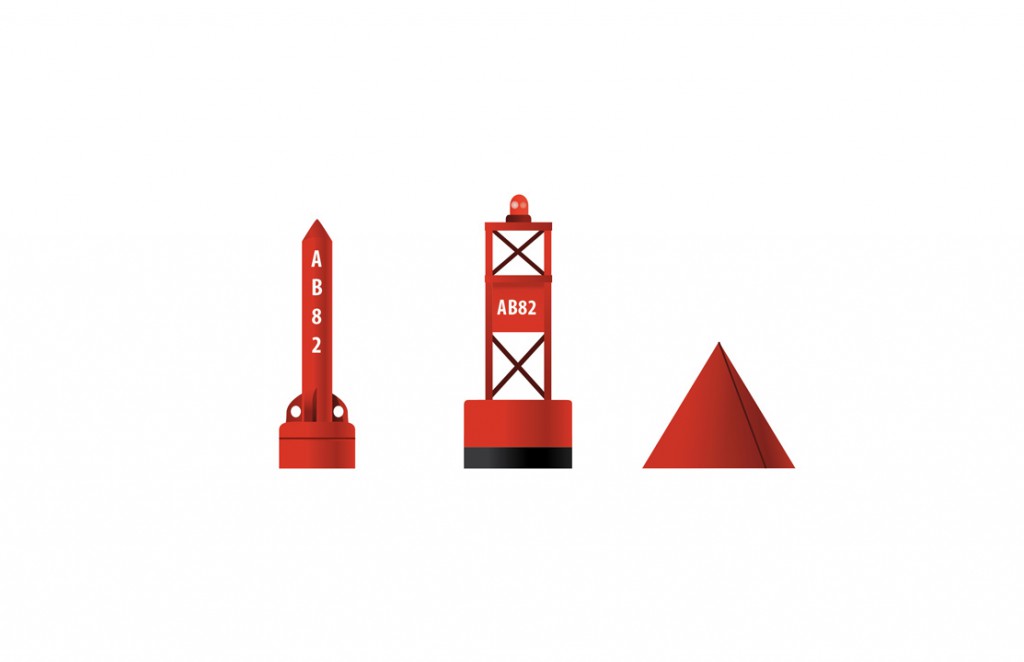
Starboard-Hand Buoys are red in colour and mark the right side of a channel or the location of a specific danger. These buoys must be kept on the right-hand side of your boat when heading upstream.
Starboard-Hand Buoys are identified by letter(s) and even-digit number(s), and in standard configuration, are pointed on the top. If they do not have a red light they will be conical on the top.
Starboard-Hand Buoys may also be fitted with a red light that flashes in either a:
- F1 pattern (single flashes in four second intervals); or
- Q pattern (quick, single flashes one second apart)
Safe Boating Tip
Remember: Opposites attract when heading upstream! Your boat’s green sidelight will always match up with any red buoy that your boat approaches when heading upstream, and your red starboard sidelight will always pair with any green buoy that your boat approaches when heading upstream. Red/green, green/red!
Bifurcation bouys
Part of the Lateral System, Bifurcation Buoys indicate the junction of two or more channels. You may pass on either side of these buoys when proceeding upstream but the preferred channel is indicated by the colour of the topmost band.
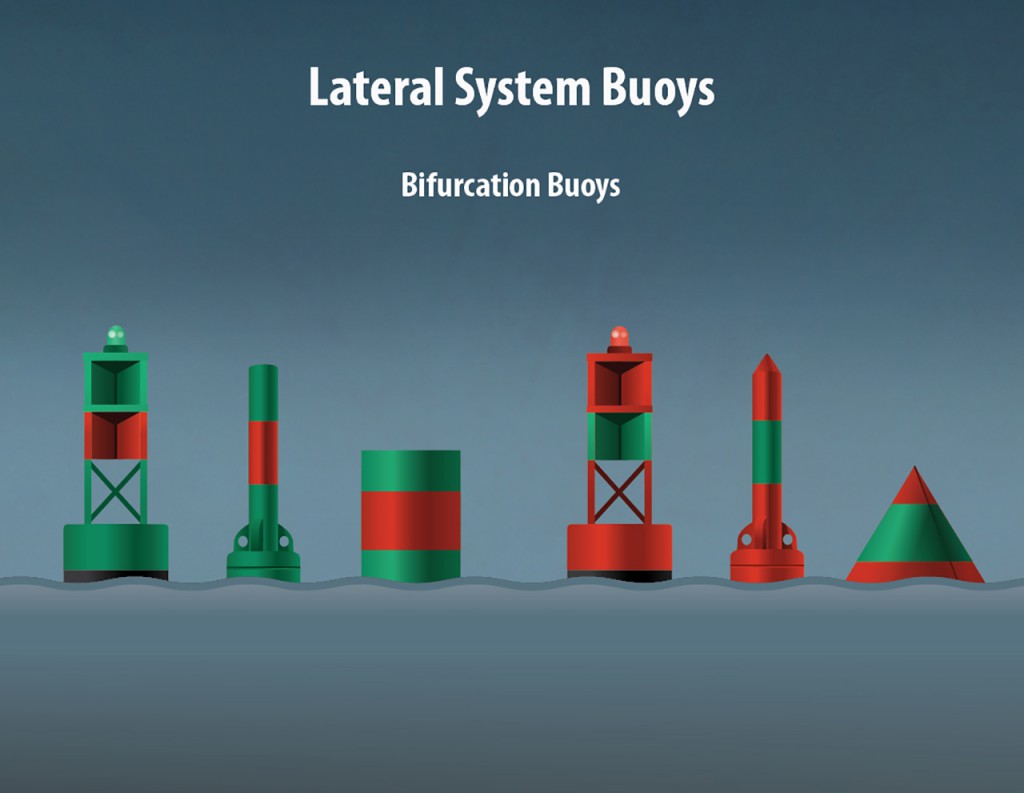
Port-Junction Bifurcation Buoy
Port-Junction Bifurcation Buoys are green in colour with a red horizontal band at the midsection. These buoys should be kept on the port (left) side of the vessel when navigating upstream.
Starboard-Junction Bifurcation Buoy
Starboard-Junction Bifurcation Buoys are red in colour with a green horizontal band at the midsection. These buoys should be kept on the starboard (right) side of the vessel when navigating upstream.
Fairway bouys
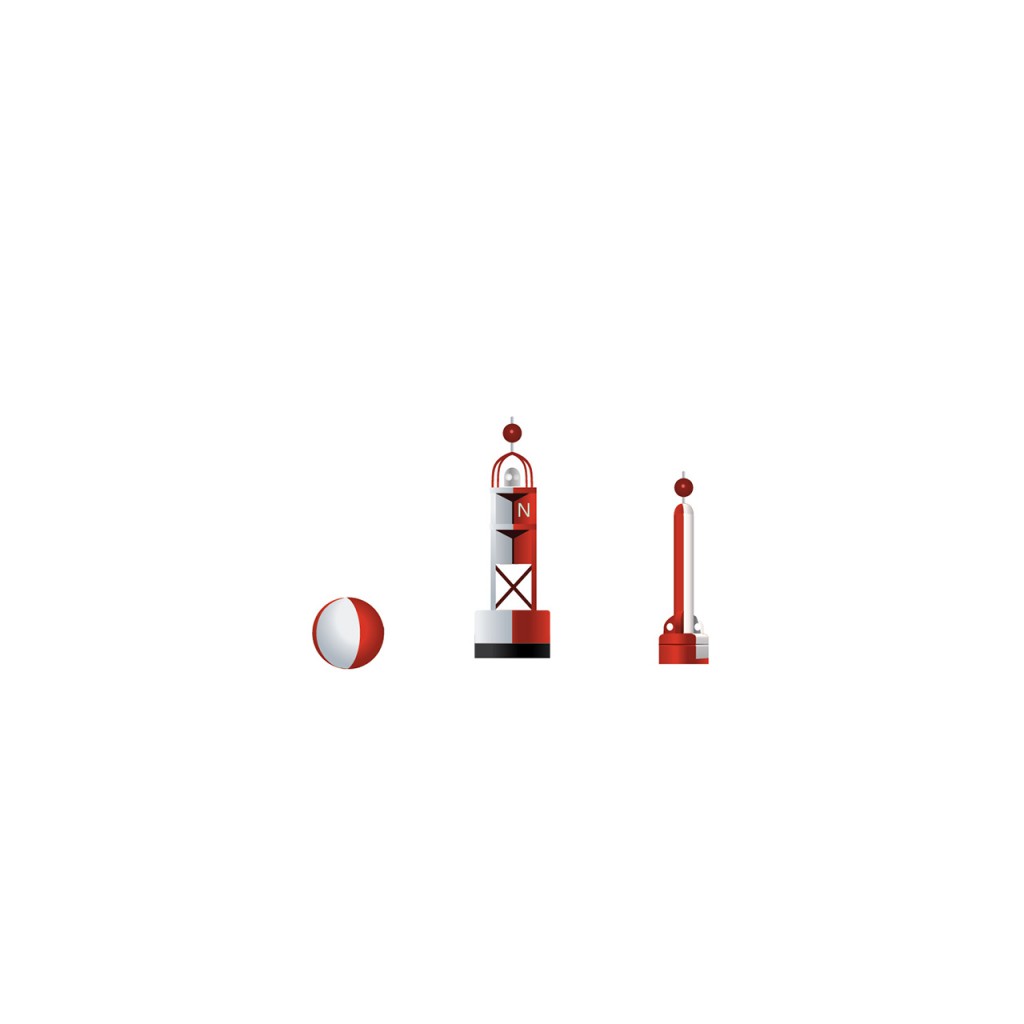
Fairway Buoys are used to mark the entrance to a channel, the centre of a shipping channel or a safe approach to land. Operators should keep the Fairway Buoy on the left (port) side whether proceeding upstream or downstream.
Fairway Buoys are identified by the following:
- Red and white in colour, divided vertically with one red side and one white side
- Will have a ball shaped top-mark
- May be equipped with a white light that flashes in a Mo(A) sequence–one short flash, followed by one long flash repeated ten times per minute
Isolated Danger bouys
An Isolated Danger Buoy is used to mark an isolated hazard or obstruction such as a rock, shoal or sunken island. This buoy will be moored on, or above, an isolated danger that has navigable (i.e. safe) water all around it. You should refer to a marine chart to determine the features of the isolated danger (i.e. size, depth, exact location, etc.) and should navigate well clear of the marked danger.
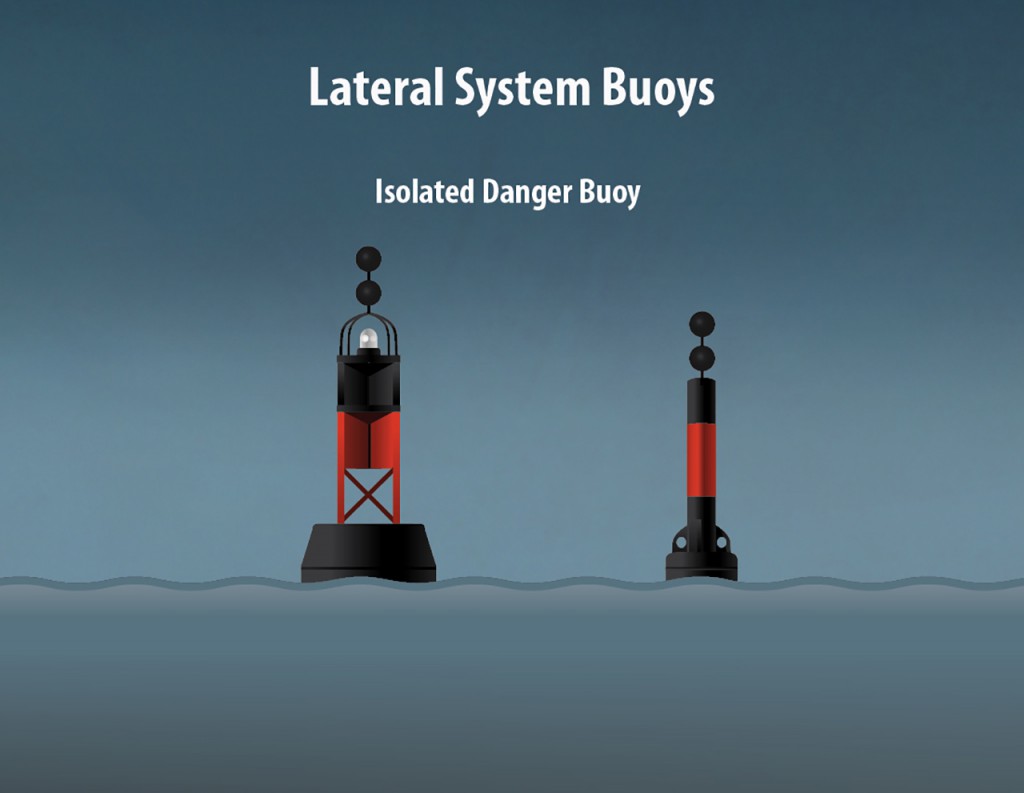
Isolated Danger Buoys are identified by the following:
- Black in colour with a wide red band at the midpoint
- A top-mark consisting of two black balls
- May be equipped with a white light that flashes in a FL(2) sequence–a two flash sequence repeated every four seconds
